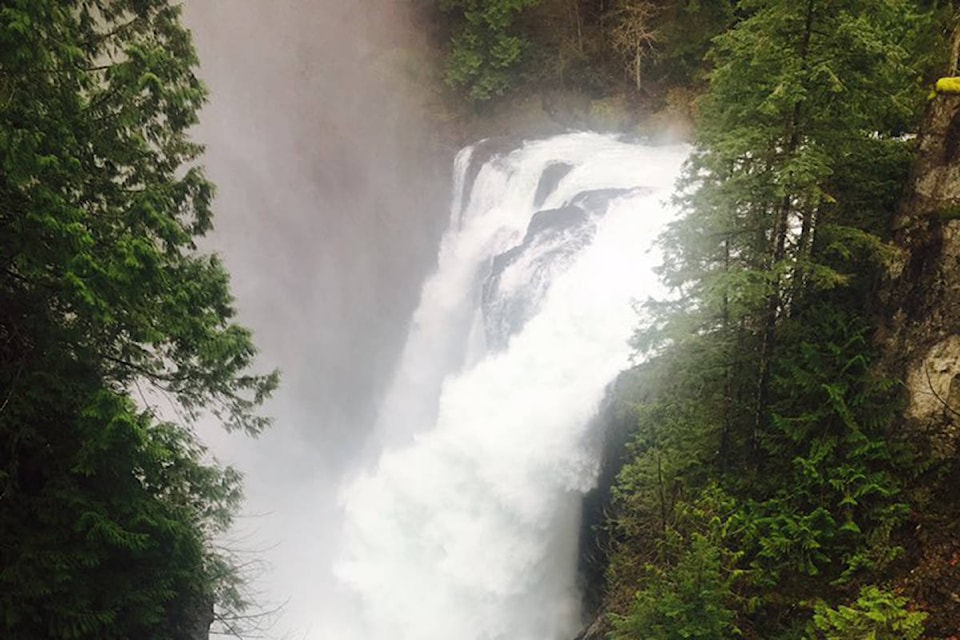Yesterday and today’s heavy rainfall has pumped the Campbell River water system to near-capacity and BC Hydro has begun releasing extra water to cope.
“For public safety, we advise the public to say away from Elk Falls Canyon and the Campbell River through this week,” BC Hydro spokesperson Stephen Watson said in a media release announcing the release down Elk Falls increasing from four cubic metres squared to about 80.
The Upper Campbell Reservoir/Buttle Lake was at 219.65 metres and had leveled off from a storm a few days ago. It is expected to rise over the week with the forecasted storm that may bring heavy rain and some snowmelt. Depending how the storm tracks, and how much snowmelt enters the reservoir, BC Hydro may increase the flow down the canyon to about 110 m3/s or it may end the 80 m3/s spill sooner.
“We will respond as needed,” Watson says. “We prefer to keep the reservoir level below 220.5 metres and do not want it to exceed 222 metres.”
The John Hart generating station is running at full capacity and with the 80 m3/s release down the canyon, the total Campbell River flow today will be about 205 m3/s. Water inflows into the upper reservoir is forecasted to be over 600 m3/s on Thursday before trending downward over the weekend.
“We are also advising anglers to be cautious around the Campbell River, below the John Hart generating station, from Jan. 1 to Feb. 15,” Watson says. “We are entering a six-week period where BC Hydro can, within our water use plan, adjust operations at the John Hart facility to respond to electric system demands, planned outages within our grid system, and to make the most economic use through market conditions of water stored in our reservoirs.
This is typically the time of year when the weather is cold and electricity demand is high. Watson says BC Hydro is fortunate with its many hydroelectric facilities across the province to be able to conserve water at night and then increase power generation during the day to look after domestic load needs and take advantage of the favourable market conditions. It helps keep rates lower, he says.
BC Hydro has four hydroelectric watersheds on Vancouver Island, with the three others being the Puntledge, Ash and Jordan River facilities. BC Hydro can adjust operations for daily market conditions on all of them except for the Puntledge system.
